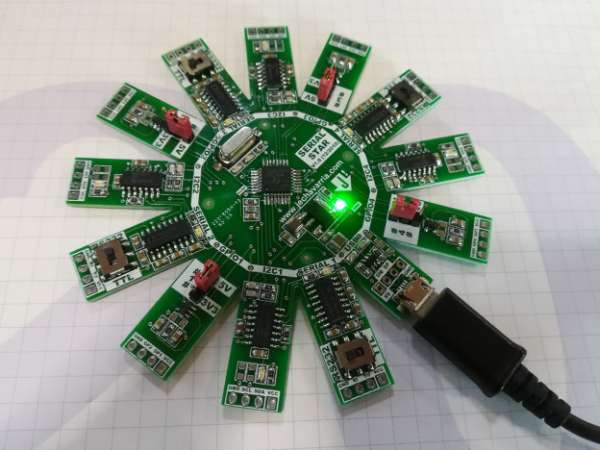Hi all! Here’s one of the last board I design the last year. On 2016, I develop the Dual USB Serial and I2C Converter board. Although this board works fine, it has a couple of lacks. First one, is that to use the both converters, you need two free USB ports. Is a minor problem today with USB hubs, but you need the hub and also two USB wires. And the other problem is that this board uses mini-USB connectors. Of course today you can still find it, but aren’t as common as the micro-USB wires. For this two reasons, I decide to upgrade the board, add the micro – USB connector and put a USB hub inside it. Because I choose a 4-port USB hub, I use also 4 USB serial converters. With some addons, you can select power supply value (5V, 3V3), serial levels (TTL, RS232) and GPIO functions in an independent way for each converter. So, let’s see how works this USB Serial Star, a 4 in 1 USB to Serial and I2C Converter.
- THE HARDWARE
This board is basically a 4-port USB hub with 4 USB to Serial and I2C bridges and some addons. The USB hub is the TUSB2046I, from Texas Instruments. The USB Serial bridges are the MCP2221A from Microchip, the same reference I use on the past. First of all. the schematic of the board, you can download here: EEL_SERIAL_STAR_V1.0. The schematic is simple, here’s a brief description of each page:
- Page 1: Main diagram. Interconnection of all the blocks of the scheme. Here’s the micro – USB connector, and also a 2.54mm header connector with the USB signals. This is reserved for use with a soldering cable or in the case the hand soldering of the micro – USB connector fails.
- Page 2: Power supply. The board is powered via USB, so input power supply is +5V from the USB port. There’s a LDO (U1) that allows 3.3V onboard. With the jumpers S1 – S4 you can choose the voltage of each USB serial converter, between 5V from USB or 3.3V from the LDO. Ater the jumper, before powering the USB serial converter, there’s a single channel current limited power switch, the TPS2041B. The idea is use this switch to detect overcurrents on any of the four USB serial conveters and disconnect it, allowing the rest of the ports working without problems. For each switch, there’s a not-assembly resistor, to use it in the case you want to bypass this switch.
Read more: SERIAL STAR, A 4 IN 1 USB SERIAL AND I2C CONVERTER

